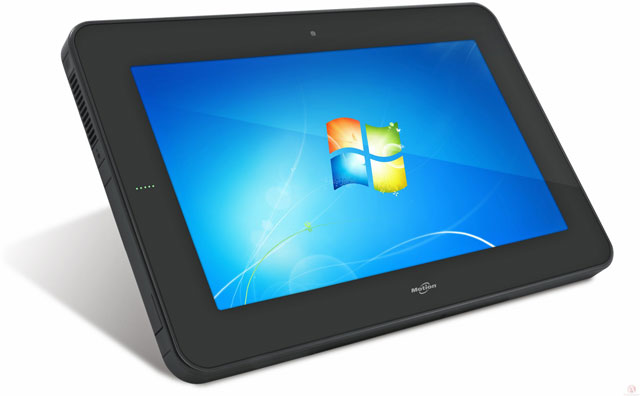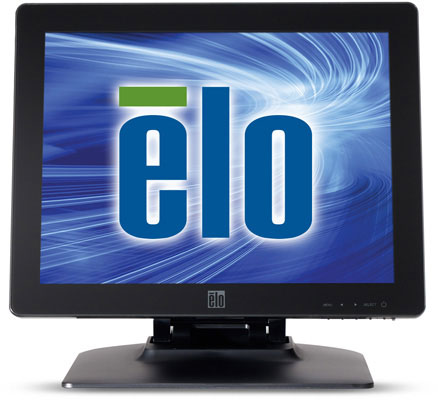Brother Introduces Apple AirPrint Compatibility for RuggedJet 4 Mobile Printers

Brother has announced that its RuggedJet 4 Wi-Fi handheld receipt and label printers now support Apple AirPrint wireless technology. AirPrint from Apple allows users to wirelessly print from iPad, iPhone, and iPod touch devices directly to RuggedJet 4 printers with ease. Brother Mobile Solutions, a premier provider of mobile and desktop thermal printing products, is proud to bring seamless integration and wireless printing to iOS users with this announcement.
Built-in AirPrint compatibility allows instant printing from iOS devices without the need to download or install drivers or interfaces and simplifies the RuggedJet user experience, making the thermal printer even easier to use. Moreover, all existing RuggedJet 4 Wi-Fi printers are backward compatible with AirPrint via a simple, free firmware update available from Brother.
Auto-Star Partners With Motion Computing To Offer Mobile POS Solution

In today’s competitive retail market, keeping up with industry trends is imperative and retailers who adopt early are able to meet their customer’s growing expectations. Auto-Star Compusystems Inc., an innovative developer of point of sale software, and Motion Computing, a leading global provider of mobile technology, are pleased to announce the certification of the Star-Plus POS and the Motion CL910 and F5te Tablet PC. Together, the solution offers retailers the latest in mobile point of sale technology.
Durable and lightweight, the CL 910 and F5te tablets can be equipped with a barcode scanner and magnetic stripe reader, allowing retailers to easily scan products, check inventory and update pricing information on the go. In addition, retailers are able to process transactions and capture customer data from anywhere on the selling floor, providing them with a dynamic line busting tool. This significantly decreases wait times for customers, enhancing their buying experience, while also reducing the stresses placed on traditional cash lines.
Barcode Warehouse Management Software
Barcode warehouse management software is used to control the movement and storage of products or goods within a warehouse and process the associated transactions including, but not limited to, shipping, receiving, put away and picking through the use of barcode automatic identification and data capture (AIDC) technology.
Warehouse management systems manage the following core functions:
- Receiving – The ability to properly handle a shipment when it arrives. This process can be individualized to each warehouse or product type. In some cases, goods are not received into a facility, but rather cross-docked, which is a logistics procedure where products from a supplier or manufacturing plant are distributed directly to a customer or retail chain with marginal to no handling or storage time. Cross docking takes place in a distribution docking terminal; usually consisting of trucks and dock doors on two (inbound and outbound) sides with minimal storage space. The name ‘cross docking’ explains the process of receiving products through an inbound dock and then transferring them across the dock to the outbound transportation dock.
- Put Away – Put-away is normally thought of as the process of moving received inventory from the dock, kitting area, or production department to a storage bin. The put-away process is also used to relocate inventory within the warehouse and to replenish dedicated storage bins with inventory from a reserve storage bin. Any time inventory is being placed in a storage bin it is being put away. System directed put-away is when the WMS chooses the destination storage bin rather than the operator.
- Inventory – Inventory Technology refers to the supervision of supply, storage and accessibility of items in order to ensure an adequate supply without excessive oversupply. It also helps companies keep lost sales to a minimum by having enough stock on hand to meet demand. The inventory can be real-time or in the form of a cycle count, which is an audit procedure designed to verify the inventory accuracy for a small subset of inventory in a specific location on a specific day, thus providing an ongoing measure of inventory accuracy.
- Picking – Picking consists of taking and collecting articles in a specified quantity before shipment to satisfy a customer’s order. The following are different types of picking:
- Piece Picking (or Pick to Part) – Order pickets move to collect the products necessary for one order.
- Zone Picking – Each order picker is assigned to one specific zone and will only realize order picking within this zone.
- Wave Picking – Order picker moves to collect the products necessary for several orders.
- Sorting Systems Method – No movement of the order picker, as the products are brought to picker by an automatic system.
- Pick to Box Method – No movement of the order picker, as the picking area is organized so that there are a number of picking stations connected by a conveyor. The order picker fills the box with the products from his station and the box moves to the other picking stations until he customer order is complete.
- Packing – Packing occurs after the picking process and entails prepping a product or good for shipment by re-packaging, affixing with a shipping label, including an invoice and staging in preparation for shipment. Additionally, for certain goods or customers, there may be the requirement for kit building.
- Shipping – Shipping entails the delivery of the right product or good to the right customer or location using the right method of shipment, all while minimizing the cost. If a customer is doing their own delivery, incorporating proof of delivery allows for more accurate information and quicker confirmation to the customer. Furthermore, our software has the ability to integrate shipment tracking for customers.
Continue reading »
Elo Introduces New iTouch Touchscreens for the Gaming Industry
 Elo, the original inventor of touchscreen technology, today announced a portfolio of touchscreen platforms for the global gaming industry based on Elo iTouch surface acoustic wave technology. Leveraging energy-saving LED technology that reduces power consumption by fifty percent, the stylish zero-bezel, true flat clear glass touchscreens are available in a variety of sizes for gaming machine, loyalty program kiosk, interactive directory map, sports book, hotel, restaurant and retail applications. The Elo 24-inch true flat touchscreens will be on display in booths 4019 and 4041 during the G2E Global Gaming Expo Las Vegas to be held 24-26 September 2013.
Elo, the original inventor of touchscreen technology, today announced a portfolio of touchscreen platforms for the global gaming industry based on Elo iTouch surface acoustic wave technology. Leveraging energy-saving LED technology that reduces power consumption by fifty percent, the stylish zero-bezel, true flat clear glass touchscreens are available in a variety of sizes for gaming machine, loyalty program kiosk, interactive directory map, sports book, hotel, restaurant and retail applications. The Elo 24-inch true flat touchscreens will be on display in booths 4019 and 4041 during the G2E Global Gaming Expo Las Vegas to be held 24-26 September 2013.




